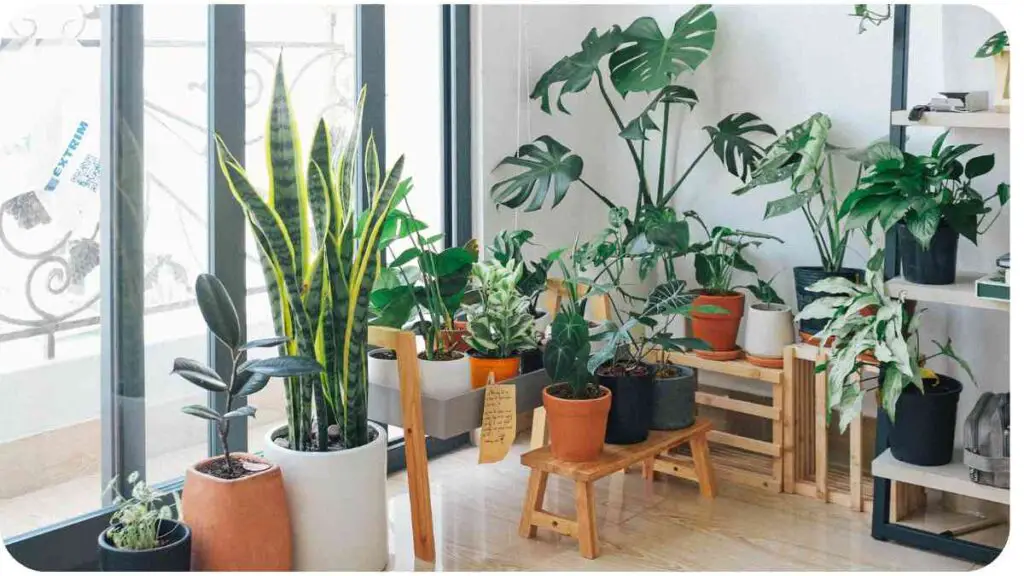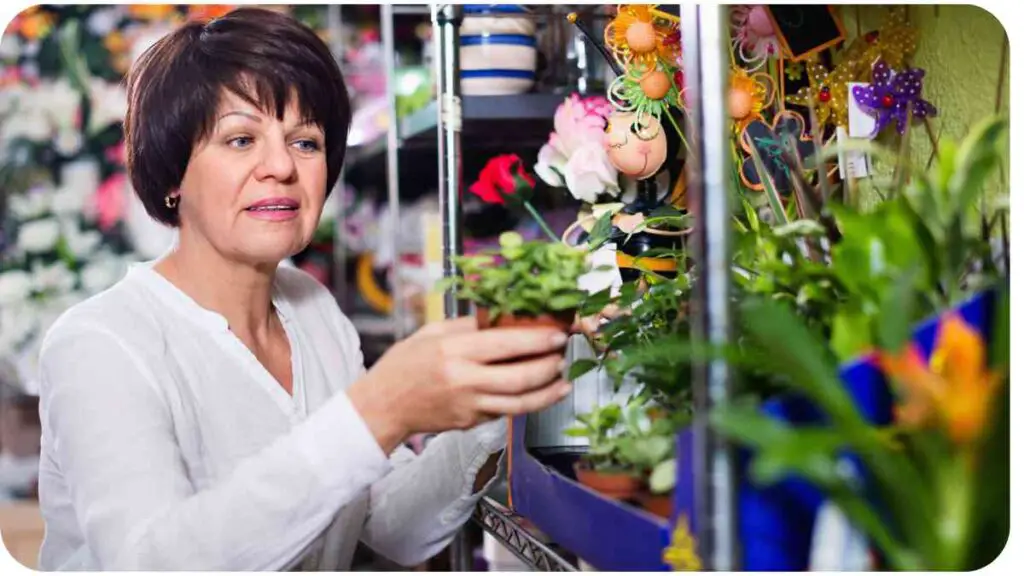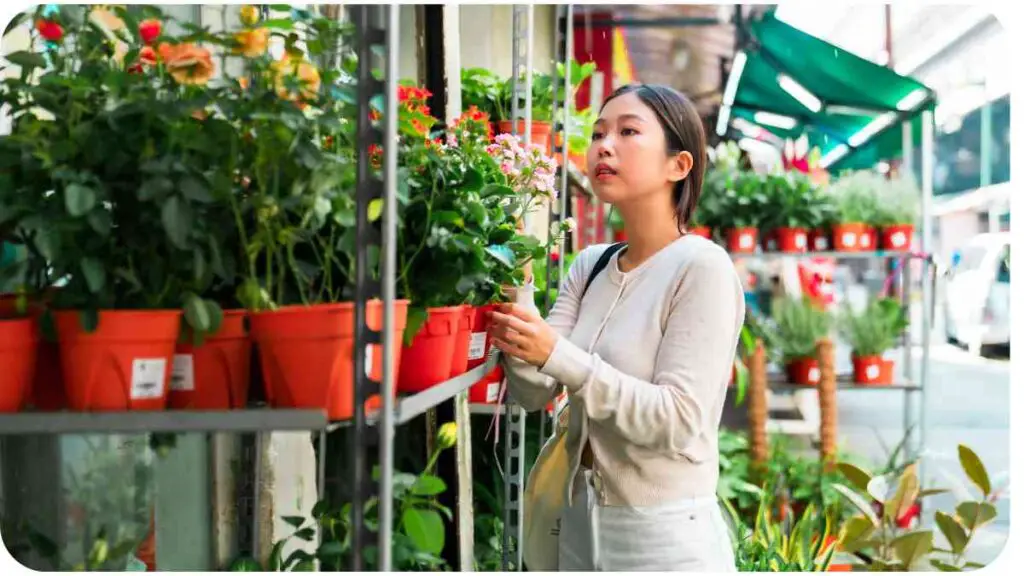Looking for the perfect indoor plant to breathe life into your home? You’re not alone! With so many local stores and online shops offering a range of indoor plants, it’s easy to get lost. Where’s the best place to buy? How do you know if you’re getting a good deal?
In this guide, I’ll walk you through the best spots to buy indoor plants locally and online. Whether you’re a plant newbie or a seasoned green thumb, you’ll find actionable tips on where to get the best deals, what to look for in a healthy plant, and how to care for your new leafy companion.
| Key Takeaways |
|---|
| Indoor plants provide health benefits, improve air quality, and enhance home aesthetics. |
| Choose low-maintenance plants like Snake Plants if you’re a beginner or have a busy schedule. |
| Local garden centers, nurseries, and farmers’ markets offer a wide variety of indoor plants. |
| Big-box retailers and supermarkets can be convenient options, though plant quality may vary. |
| Online plant shops like The Sill and Houseplant Shop provide easy access to diverse plant selections. |
| Ensure you choose healthy plants by checking for vibrant leaves, firm roots, and pest-free conditions. |
| Caring for indoor plants involves understanding their light and watering needs, with over-watering being a common issue. |
| Repotting plants every 12-18 months can promote healthy growth and refresh the soil. |
Why Indoor Plants Are Popular
Indoor plants have become more than just a trend; they’re a lifestyle choice. From improving your home’s air quality to adding a touch of nature indoors, there are so many reasons people love filling their living spaces with plants. Whether you’re looking to spruce up your apartment or bring some calm into your home office, indoor plants offer more than just aesthetic benefits.
Finding the right balance in your outdoor spaces is key for creating a welcoming atmosphere. To achieve this, learn how to choose the right materials for your deck and ensure longevity with minimal upkeep. The quality of the materials you select can make all the difference.
Health Benefits of Indoor Plants

One of the top reasons people bring indoor plants into their homes is for the health benefits. Plants are natural air purifiers, filtering out toxins and releasing oxygen. Want to breathe better air? Pop a few plants into your living room! Many studies even suggest that indoor plants can help reduce stress and improve concentration, making them perfect for home offices or study areas.
Aesthetic Appeal of Indoor Plants
Let’s not forget that indoor plants simply look good! Whether you’re going for a minimalist vibe or want to create an indoor jungle, there’s a plant for every style. Plants can instantly brighten up a dull corner or act as a statement piece. Plus, with the wide variety of pots, stands, and shelves available, your plant setup can reflect your personal style. Imagine a cute Monstera sitting pretty by your window or a vibrant Snake Plant greeting guests at the door.
Understanding Different Types of Indoor Plants
Not all indoor plants are created equal. Some require little attention, while others might need a bit more care. To get the best out of your plant-buying experience, it’s essential to understand which types will thrive in your specific environment.
When thinking of how you can best utilize your outdoor space, adding lighting can transform the environment. Consider reading this comprehensive guide on how to put up lights in your backyard to make your yard glow during warm evenings.
Low-Maintenance Indoor Plants
If you’re new to the world of indoor plants or just don’t have a lot of time to care for them, low-maintenance options like Snake Plants and ZZ Plants are your best bet. These plants can thrive in low light and don’t need frequent watering. It’s like having a low-effort pet that still gives you all the love!
Flowering Indoor Plants
Looking for a pop of color? Flowering plants like Peace Lilies or African Violets not only brighten up your space but also bring a delightful scent. They do require a bit more care, so make sure you’ve got time to water and give them the right amount of sunlight. But the reward? Gorgeous flowers blooming indoors year-round!
Air-Purifying Indoor Plants
Want to clean your indoor air naturally? Air-purifying plants like Spider Plants and Boston Ferns are great choices. These plants remove harmful chemicals like formaldehyde and benzene from the air, giving you fresher, healthier surroundings. It’s like having a mini green lung in your living room!
As we embrace the beauty of nature in our home environments, creating a harmonious space for both plants and pets becomes important. If you’re looking for the best options, this article on dog-friendly houseplants offers a great list of plants that are safe and beautiful.
Best Local Stores To Buy Indoor Plants

Now that you’re set on getting an indoor plant, where should you go? Local stores offer a personal touch and often have knowledgeable staff who can guide you on the best plants for your space.
Independent Garden Centers
Independent garden centers are my favorite places to buy indoor plants locally. These centers usually have a wide variety of plants, and you can expect to find some unique species. Plus, the staff are often plant experts themselves and can offer great advice on what works best for your home environment.
Nurseries
Nurseries are another excellent option, especially if you’re looking for plants that have been grown with care. The best part? You can usually see the entire plant growth process from start to finish. If you’re lucky, you might even find baby plants (often called “pups”) that are cheaper than fully grown ones.
Farmers’ Markets
If you’re all about supporting local, check out farmers’ markets. Many local plant enthusiasts sell their home-grown plants at these markets, and you can often find rare varieties at a great price. Plus, it’s a fun way to spend a Saturday morning!
For pet owners who want to keep their dogs cool and happy during summer, homemade dog treats are a must. This recipe guide for homemade frozen dog treats provides simple and tasty ideas for dogs to enjoy on warm days.
Exploring Chain Stores for Indoor Plants
If local shops aren’t your thing or you want a more convenient option, big-chain stores can be a great alternative. Many of these stores have garden sections where you can find a good variety of indoor plants at reasonable prices.
Home Improvement Stores
Home improvement stores like Home Depot or Lowe’s often have a dedicated garden center. You can find popular indoor plants like Pothos, Fiddle Leaf Figs, and Peace Lilies at budget-friendly prices. Bonus: they often run seasonal sales!
Supermarkets
Believe it or not, supermarkets sometimes carry indoor plants too! Stores like Trader Joe’s and Whole Foods occasionally stock small plants like succulents and herbs, perfect if you’re just starting out. While the variety may be limited, it’s a convenient option for those looking to grab a plant while doing their grocery shopping.
Big-Box Retailers
Big-box retailers like Walmart and Target also have a selection of indoor plants. While these plants might not have the best care before hitting the shelves, they’re usually affordable and easy to find. A little extra TLC after you bring them home can help them thrive.
Buying Indoor Plants Online
Not into shopping in person? No problem! You can buy indoor plants from the comfort of your own home.
Dedicated Plant Shops Online
There are plenty of online plant shops like The Sill, Bloomscape, and Leaf & Clay that offer an incredible selection of indoor plants delivered straight to your door. These stores typically offer a wide range of plants along with care instructions to help you keep them healthy.
Combining relaxation and fun, dog yoga is a great way to bond with your dog while also staying active. The basics and benefits of dog yoga are detailed here, offering tips to incorporate this calming practice into your routine.
General E-commerce Platforms
You can also buy plants from general e-commerce platforms like Amazon and Etsy. While the variety may be vast, make sure to read reviews to ensure you’re getting a healthy plant. Some sellers may also offer plant bundles, which is a great way to start your collection.
Price Comparison: Local vs. Online
When it comes to pricing, should you buy local or online? Both options have their pros and cons.
| Plant Type | Local Store Price Range | Online Store Price Range |
|---|---|---|
| Snake Plant | $15 – $30 | $20 – $40 |
| Peace Lily | $10 – $25 | $15 – $35 |
| Monstera | $25 – $50 | $30 – $60 |
| Spider Plant | $5 – $15 | $10 – $20 |
| ZZ Plant | $20 – $45 | $25 – $50 |
As you can see, local stores tend to have slightly lower prices, but online stores often offer more variety. However, shipping costs and plant health upon arrival can be a gamble when buying online.
Tips for Choosing Healthy Indoor Plants

Now that you know where to buy indoor plants, let’s talk about what to look for when choosing the healthiest plants. Picking a healthy plant from the start will save you time, money, and frustration down the line.
- Check the Leaves: Look for vibrant, green leaves. Avoid plants with yellowing, browning, or wilting leaves, as these are signs of stress or disease. You want a plant that’s perky and full of life!
- Inspect the Soil: The soil should be moist but not soggy. If the soil is bone dry or overly wet, it could mean the plant hasn’t been cared for properly.
- Examine the Roots: If possible, gently lift the plant from its pot and check the roots. Healthy roots are white and firm. If they’re dark, mushy, or circling the pot, it may be root-bound or suffering from root rot.
- Look for Pests: Make sure there are no signs of pests like aphids, spider mites, or fungus gnats. Check both the tops and undersides of the leaves for any unwanted critters.
Choosing a healthy plant from the get-go means fewer headaches in the future. And don’t be afraid to ask questions at the store staff are usually happy to help!
Caring for Your Indoor Plants After Purchase
Congratulations on your new plant! But your journey doesn’t end once you bring it home. Now comes the fun part caring for your leafy friend so it can thrive in your space. Here are some essential tips to get you started.
Watering and Light Requirements
Different plants have different needs when it comes to water and light. For instance, succulents like Aloe Vera need minimal water and prefer bright, direct sunlight. On the other hand, plants like the Peace Lily thrive in low-light conditions but need consistent watering.
Here’s a general rule: under-watering is better than over-watering. Over-watering is one of the most common ways people accidentally harm their plants. Make sure to check the soil before watering if the top inch is dry, it’s time to water.
Repotting Tips
Your plant may outgrow its current pot, and when that happens, it’s time to repot. Repotting gives your plant more room to grow and refreshes its soil, providing new nutrients.
- When to Repot: Generally, you should report every 12-18 months or if you notice roots growing out of the drainage holes.
- Choosing a Pot: Make sure the new pot is slightly larger than the old one and has proper drainage.
- Repotting Process: Gently remove the plant from its current pot, loosen the roots, and place it in the new pot with fresh soil. Water it thoroughly and let it adjust to its new home.
Repotting might seem intimidating, but it’s essential for the long-term health of your plant. Plus, it’s a great excuse to buy a cute new pot!
Caring Table for Popular Indoor Plants
| Plant Type | Light Requirements | Watering Frequency | Repotting Timeframe |
|---|---|---|---|
| Snake Plant | Low to medium indirect light | Water every 2-3 weeks | Every 12-18 months |
| Peace Lily | Low to medium indirect light | Water weekly | Every 12-18 months |
| Monstera | Bright, indirect light | Water every 1-2 weeks | Every 12-18 months |
| Spider Plant | Medium indirect light | Water every 1-2 weeks | Every 12-18 months |
| ZZ Plant | Low to medium indirect light | Water every 2-3 weeks | Every 12-18 months |
Conclusion
Bringing an indoor plant into your home is more than just buying something pretty for your shelf. It’s about adding a little slice of nature to your life. Whether you’re shopping at a local garden center, visiting a nursery, or ordering online, knowing where to buy and what to look for will help you make the best decision for your space and lifestyle.
I’ve shared my favorite local and online plant shops, plus some handy tips for choosing healthy plants. Remember, every plant has its own personality and care needs, so it’s all about finding the right match for you. With a bit of love and attention, your indoor plant will not only thrive but also bring beauty, joy, and cleaner air into your home.
Further Reading
If you’re eager to dive deeper into the world of indoor plants, check out these resources for more insights.
- Where to Purchase Houseplants
Learn about various stores and online options for purchasing houseplants, from local shops to big retailers. - Houseplant Shop
Explore a wide range of houseplants available for purchase online, along with tips for proper care and maintenance. - Best Places to Buy Indoor Plants in 2024
Discover some of the top-rated places to buy indoor plants, featuring reviews on popular sellers for 2024.
FAQs
Where is the best place to buy indoor plants locally?
Local garden centers and nurseries are often the best places to buy indoor plants. They usually offer a variety of plants and knowledgeable staff to guide your purchase.
Can I buy indoor plants online?
Yes, many online stores, such as The Sill and Houseplant Shop, offer a vast selection of indoor plants delivered to your doorstep. Just make sure to check reviews for plant quality and shipping reliability.
How do I know if an indoor plant is healthy before buying?
Look for vibrant leaves, healthy roots, and check the soil for proper moisture. Avoid plants with yellowing leaves, pests, or soggy soil.
What are some easy-to-care-for indoor plants?
Low-maintenance indoor plants include Snake Plants, ZZ Plants, and Spider Plants. These plants are great for beginners or those with a busy schedule.
How often should I water my indoor plants?
Watering frequency depends on the plant. Most indoor plants like the soil to dry out between waterings, so typically every 1-2 weeks is sufficient, but always check the soil first.

For 15 years, Hellen James has worked in the gardening industry as an expert and landscape designer. During her career, she has worked for a variety of businesses that specialize in landscaping and gardening from small firms to large corporations.

